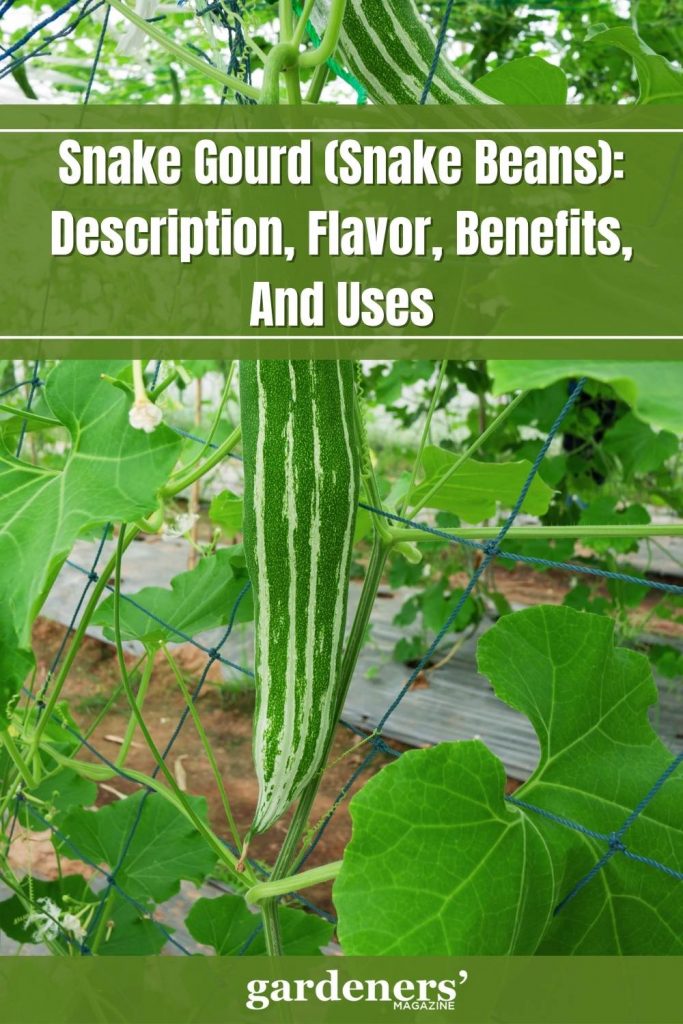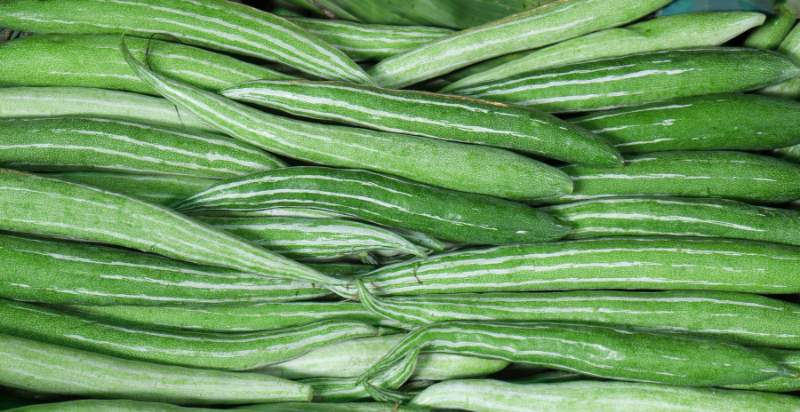Snake Gourd, also known as snake beans, is a climbing vine from the cucurbit family. This vegetable is native to India and Southeast Asia but has spread worldwide in recent years due to its versatility in cooking. It is easily recognizable by its long, green fruits that resemble snakeskin. Its large size makes it difficult for home cookers to prepare since it requires specialized tools like peelers and slicers. Here is everything you need to know about snake gourd, its nutritional benefits, culinary uses, and tips for selecting and storing it.
What is Snake Gourd?
Snake Gourd is a long, green cucurbit vegetable with a thin skin and large seed pods. It has been cultivated for thousands of years in India and Southeast Asia due to its unique flavor and versatility in cooking. However, the fruit can be either raw or cooked; cooked is preferred. Its seeds can be utilized to create a nourishing powder as well.
Snake gourd is an annual vine with heart-shaped leaves and yellow flowers. The fruits are long, cylindrical green pods that resemble snakes or gourds when mature. The fruit’s flesh is white and juicy, has a mild flavor, and is slightly bitter.
The plant is known for its medicinal qualities, as it is said to be beneficial in treating digestive and respiratory disorders. Snake gourd is also believed to have anti-inflammatory, antioxidant, antidiabetic, and antimicrobial properties.

History and Origin of Snake Gourd:
Snake gourd, known as calabash or Chinese okra, is a herbaceous climbing plant from the Cucurbitaceae family. India, Sri Lanka, Thailand, Vietnam, Malaysia, and other tropical and subtropical parts of Asia are their native habitats. It is said that India is where the snake gourd, which has been farmed for a long time, first appeared. It has been used as a food and medicine since it was used in Ayurvedic medicine. As a component of Lord Krishna’s diet, it is described in the Hindu epic Mahabharata.
Cultivation of Snake Gourd:
Snake gourd is a tropical and subtropical climbing herbaceous plant that can be grown in warm climates. The plant needs plenty of water, sunlight, and slightly acidic soil to grow successfully. Soil preparation should include adding adequate amounts of compost or other organic matter to improve drainage and increase fertility. Spacing between plants should be kept at least 3 feet to allow the vines to spread and climb.
Health Benefits of Snake Gourd:
Snake gourd is a nutritious food with several health benefits. It has been used in traditional medicine for centuries in India and other parts of Asia to treat various ailments such as diabetes, indigestion, and inflammation. Snake gourd is an excellent source of dietary fibre, vitamins A, B-complex, C, E, and K, and minerals, including calcium, copper, magnesium, manganese, phosphorus, selenium, and zinc. Additionally, it has a lot of antioxidants, which might help shield the body from harm from free radicals.
Where are Snake Gourds Grown and Harvested?
Snake gourds are primarily grown in tropical and subtropical areas, mainly in India, Southeast Asia, the Philippines, Indonesia, and China. They can also be found elsewhere with a suitable climate for their growth.
In India, they are typically harvested from October through April. Snake gourd plants require warm weather and soil rich in organic matter for optimal growth. Before the rinds get tough and bitter, the fruit should be picked when it’s young. After being harvested, snake gourds can be kept for up to two weeks at room temperature or for longer in the refrigerator. Snake gourds can be prepared in many different ways when they are mature.
What is the Flavor Profile of the Snake Gourd?
The flavor of the Snake Gourd is a mild, slightly sweet and nutty taste similar to zucchini. The inner flesh of the Snake Gourd has a soft texture, and when cooked, it takes on a smooth texture. When eaten raw, the vegetable has a crunchy texture making it great for salads or stir-fries. The gourd’s flavor pairs well with turmeric, cumin, and chili powder. It can also be used in soups and stews to add a subtle sweetness to the dish.
Where can the Best Quality Snake Gourd be found?
The best quality Snake Gourd can be found at specialty produce markets and farmers’ markets. Finding high-quality Snake Gourds in some grocery stores or online retailers may also be possible. When shopping for Snake Gourd, look for firm, unblemished fruits free of soft spots or discolouration.
Avoid soft and wilted fruits, as this indicates that the gourd has been overripe. Additionally, choose Snake Gourds with tender skin, as older fruits tend to have tougher skins. Finally, smell the inside of the fruit for any signs of spoilage or rotting before purchasing to ensure you are getting the freshest product available.

How do you Store Snake Gourd?
Snake Gourd can be stored in the refrigerator for up to one week. Wash and dry the Snake Gourd thoroughly before storing it. Cut off any wilted or discolored parts, wrap them in a paper towel and store them in a sealed container in the refrigerator. Ensure there is plenty of air around the gourd, and check it often to ensure it is still fresh.
If you want to keep the gourd for over a week, put them in a plastic bag with a few holes punched and keep them somewhere cold, dry, and well-ventilated. In this manner, the gourd can last for up to two months. To preserve the gourd’s freshness and flavor, it is preferable to utilize it soon after purchase.
How to use Snake Gourd in recipes?
Snake Gourd can be used in a variety of recipes. It is often eaten as a side dish, stir-fried with other vegetables or cooked in curries and soups. The vegetable can also be stuffed with a flavorful mixture of other ingredients to create a delicious filling for dishes like dumplings, samosas or turnovers. The gourd can also be sliced and added to salads or used as a topping for pizzas or other dishes.
When cooked, snake gourd has a mild flavor and tender, slightly crunchy texture that pairs well with many spices and flavors. Experimenting with different combinations of ingredients is the best way to find the perfect recipe for any meal.
Conclusion:
Snake gourd is a versatile vegetable that can be used in various dishes. Its mild flavor and tender texture make it suitable for stir-fries, curries, soups, salads, and other delicious recipes. With the right ingredients, this unique vegetable can be transformed into an exciting meal that will please even the pickiest eaters. So don’t be afraid to give snake gourd a try today!
- Everything You Wanted to Know About Red Tamarillos - June 2, 2025
- A Guide to Tulips: Everything You Need to Know & More… - June 2, 2025
- Guanabana: Description, Flavor, Benefits, And Uses - May 27, 2025

4 thoughts on “Snake Gourd (Snake Beans): Description, Flavor, Benefits, And Uses”
Comments are closed.